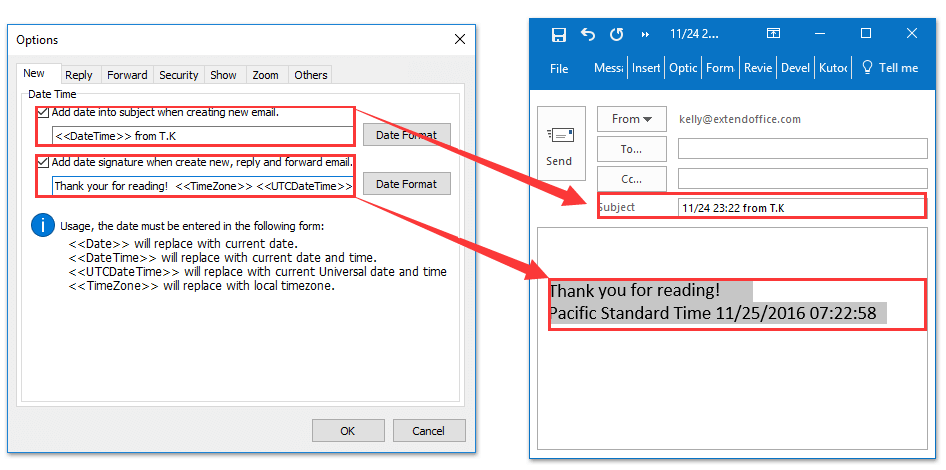- To get started, open the Contacts folder in Outlook. If necessary, change to Business Card view. Next, double-click on your business card from the list. A contact form opens. On the Ribbon, in the Options group, click on the Picture button. From the drop-down menu that appears, click Add Picture An Add Contact Picture dialog box appears.
- Select the image you want from your device, Bing, or a cloud storage area, and then click “OK.” The image will now be your email’s background in Outlook. You have to apply these background effects each time you create a new email in Outlook. If you use one or more on a regular basis, you can create a template to save time and effort later.
Available methods built into Outlook: Pros and Cons. Aside from adding the picture manually each time, there are various built-in features in Outlook to (semi-)automate adding a banner at the top such as: A default Signature (and then write your message between the top-banner and actual signature part) A message Template or Stationery; Quick Parts. Embed a video in Outlook emails by linking it to a picture. If you’re using the Outlook desktop application, pasting the YouTube link won’t work. But as suggested in this article, you can embed YouTube videos into Outlook emails as follows: Step 1: Take a screenshot of your video and embed the image in the body of your email.
Aside from having a default signature, when creating a new message or reply/forward, some people (usually in marketing) also prefer to have a banner or special header text at the top of the message.

While this seems like an easy request, implementing it in such a way that it is added automatically is actually quite challenging and has its limitations in Outlook usability.
This guide provides several approaches how to solve this issue with the available Outlook features but also includes a VBA macro solution to fully automate adding the banner to your outgoing emails in a non-intrusive way.
Available methods built into Outlook: Pros and Cons
Aside from adding the picture manually each time, there are various built-in features in Outlook to (semi-)automate adding a banner at the top such as:
- A default Signature (and then write your message between the top-banner and actual signature part)
- A message Template or Stationery
- Quick Parts
- Macro Code
Signature
When implementing it as a signature, you’ll run into 2 issues:
- When using the TAB keyboard button to move from the message header subject to the message body, the cursor is places in front of the banner rather than below it.
- Text within a signature area is excluded from Spelling Check and AutoCorrect and will be lost when you switch signatures.

Template or Stationery
When implementing it as a Template or Stationery, it will not work on replies and forwards, only new emails. And then you also still have the issue with the cursor positioning just as when having it defined as a Signature.
Quick Parts
Using a Quick Part is actually a quite workable solution. Especially when you call the Quick Part something like “<banner>” and then use AutoComplete (F3) to insert it. Of course, this method isn’t fully automated and can still be cumbersome when you have to do it for most, if not all, of your messages.
Send with Banner macro
To fully automate adding a top-banner to your outgoing emails, without any of the aforementioned downsides, you can use the “Send with Banner” macro from this guide.
Add Your Face
Upon sending, this macro will add the required HTML for your top-banner to your message. This top-banner can be just an image but also some additional text which you want to add to the top of your outgoing message.
In the code example below, you can set the web location (URL) of the image that you wish to add and its size. You can also specify the URL for where the recipient should be taken when he/she clicks on the image (hyperlink).
In addition, you can set the macro to prompt your for each outgoing HTML message whether or not you would like to send the message with the banner at the top. The default is to prompt you but you can fully automate it by setting PromptSend to False. In that case, the banner will be added to all outgoing HTML messages.

You can add your banner to all outgoing mail or just the ones you choose.
Quick Install
Use the following instructions to configure the macro in Outlook.
- Download this code-file (
topbanner.zip) or copy the code below. - Open the VBA Editor (keyboard shortcut ALT+F11)
- Extract the zip-file and import the
AddBanner.basfile via File-> Import…
If you copied the code, paste it into a new module. - Modify the parameters for your banner between the BEGIN MODIFY and END MODIFY section of the code.
- Copy the code from the
ThisOutlookSession.txtfile or from the ThisOutlookSession section below and copy it to the ThisOutlookSession modules of Project1. - Sign your code.
Aside from the AddBanner module, you must add 3 lines of code to ThisOutlookSession.
(click on image to enlarge)
Macro Code
The following code is contained in the zip-file referenced in the Quick Install. You can use the code below for review or manual installation.
